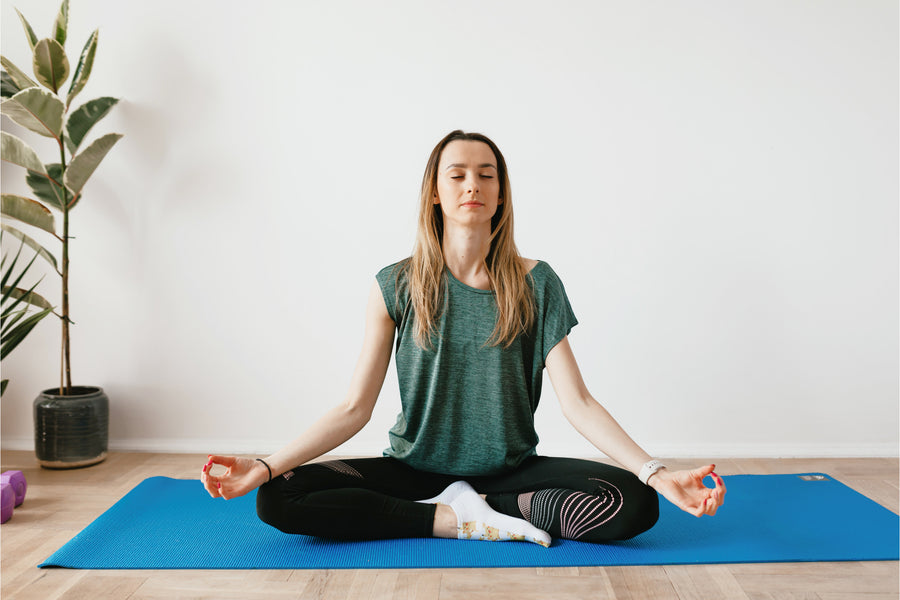
Header Photo by Karolina Grabowska from Pexels
The quality of the life we live is majorly influenced by our health. While a healthy body allows you to be effective at work and fulfill your desires with full concentration, an unhealthy body with various ailments dampens the enthusiasm and demotivates you, often degrading the quality of life.
When we talk about health, we consider both mental and physical aspects of it. Just like any other part of the body, the brain needs equal exercise and nourishment to carry out daily tasks efficiently and function to the best of its ability. Yoga is an exercise through which you can improve your body and brain’s functioning.
Yoga acts as an instant cognitive boost for the body and the mind. It enhances your brain and relieves all the stress.
The general misconception amongst the masses about Yoga is that it is just another form of exercise. Well, we can excuse the ignorance given that’s what it looks like. But it is only when you do it yourself, you understand that in reality, the overall benefits of Yoga far encompass just the physical rewards. Here we will analyze the mental benefits of yoga and how these changes positively impact your brain.
 Photo by Karolina Grabowska from Pexels
Photo by Karolina Grabowska from Pexels
Yoga Increases the Gray Matter Density
Our brain comprises two types of tissues, namely white matter and gray matter. Of this, around 60% is white matter while the other 40% is gray matter. Both types of tissues have a big importance in the cognitive functioning of the brain. Gray matter holds responsibility for skills, memory, sight senses, smell, hearing and touch. Whereas white matter works as an inter-connector between different brain sections, taking responsibility for coordination of thoughts and movements.
Comprehensive studies have confirmed that a person’s general intelligence can be measured by the volume of gray matter in a specific area of the brain. This means that the thicker the volume of gray matter, the higher chances of the person being more intelligent and the brain functioning efficiently.
When we do yoga regularly, the use of postures, the practice that goes in establishing the control, the rhythm of breathing and the constant mental activity ultimately increases the density of the gray matter tissues. Eventually improving your focus, concentration, decision making and better evaluation of things and situations.
Yoga Increases Folds In the Brain
 Photo by Kamaji Ogino from Pexels
Photo by Kamaji Ogino from Pexels
The wrinkles that you see all around in an image of the brain are known as cortical folds. These folds play an essential role in the ability of humans to think and make sound decisions. It is in these folds where the neurons are located. The folds allow more surface area, allowing more brain cells and neurons to fit in your skull.
Yoga caters to mainly three components – physical, mental and spiritual wellbeing. These are attained through various postures, poses, breath work and even meditation, an integral part of yoga. All these combined in bits and parts contribute towards increasing the number of folds in the brain.
Yoga Takes Out Stress and Anxiety
One major and commonly known way in which yoga affects our brain is the relaxation that it provides post every session. The positivity and calmness tend to slow down the hectic pace at which life moves on, instilling a sense of relief from worries and tensions.
When you do yoga, your brain releases chemicals such as GABA (gamma-aminobutyric acid ) dopamine, serotonin, oxytocin, endorphins, etc. that bring down the stress and anxiety levels that had previously crowded your head. Each of these chemicals performs a different function, combining to improve your mood and making your headspace calm.
 Photo by Tim Samuel from Pexels
Photo by Tim Samuel from Pexels
While GABA suppresses neural activity, controlling emotions such as fear, anxiety, nervousness, panic etc, the other chemicals including dopamine, endorphins, serotonin and oxytocin (together known as happiness hormones) relieve stress and worries by cheering you up, making you feel better and improving your mood. Studies have found that doing yoga consistently can increase your GABA and happiness hormones by up to 27%, making you feel content and happier overall.
Yoga Postures/Asanas For An Efficient Brain
Now that we know how yoga impacts our brain and improves our mental health. Let's discuss some specific yoga postures, or what we call asanas and pranayams that directly impact the brain.
1. Bee Breath Yoga (Brahmari)
This is a fairly simple yoga asana can be performed by anyone and is done to counter the effects of depression. To do this:
- Sit in a comfortable position, keeping your spine straight.
- Now try to put the root of your tongue to the back of your throat and breathe deeply by inhaling through your nose.
- Keep your lips sealed and tilt your chin forwards.
- Now exhale through the nose, keeping the root of the tongue near the back of the throat still.
- Continue the process, in the same way, multiple times.
Doing this asana consistently will help stop the release of all the negative emotions inside your head such as anger, frustration, irritation, etc. It will also help in building self-esteem and confidence besides sharpening your memory and retaining power.
2. Seated Forward Bend
This pos is a bit tricky and requires you to have a flexible body to perform it. But surely with a little bit of practice and stretching, you should be able to do it. For doing this asana:
- Sit on the ground with your legs straight forward.
- Now inhale and bend your upper-body forwards.
- Continue and exhale while trying to bend from your waist, keeping your shoulders down.
- Stretch your arms and try to hold your feet, wrapping around your arms while you are exhaling.
- Come up slowly, straightening your spine, inhale as you move back upwards.
- Repeat the process and remember to keep knees aligned and back straight.
Doing this yoga asana consistently will bring you various benefits like keeping the spine in shape, relieving stress and tension, relaxing the body and removing negative emotions such as irritation, frustration and anger.
3. Bridge Pose
 Photo by Anna Shvets from Pexels
Photo by Anna Shvets from Pexels
Bridge Pose is a very fun and exciting yoga pose that increases your flexibility and strengthens your back, hamstrings and spine. To do the bridge pose asana, you need to:
- Lie down on a flat surface on your back, bend the knees and keep your feet flat.
- Lift your chest while pressing your arms on the floor over your head, and then push your knees forward and the hips towards the ceiling.
- Creating a bridge in the gap between your shoulders and feet.
- Hold up for some time, and then release your arms and bring your torso back to the floor slowly.
This exercise relaxes the tight muscles and helps in calming down the brain. It lightens the nervous system and thus reduces the accompanying stress, worries, tensions and anxiety.
Conclusion
You might have heard of yoga as a great way for achieving physical fitness, but not very much is known about its benefits for those suffering from mental illnesses such as depression, anxiety, stress and similar disorders. Constant research and various studies over the years have confirmed how yoga benefits the brain in multiple ways and has deepened the understanding of the clinical applications of yoga.
 Photo by cottonbro from Pexels
Photo by cottonbro from Pexels
By indulging in yoga regularly and making it a long-term practice alongside meditation. We can not only get immediate relief from niggling ailments of daily modern lives such as stress and anxiety but can also change our brain, slowing age-related decline.
If you are looking to derive the mental health benefits from yoga, then start with 20-minute yoga sessions daily. This holistic method will improve all aspects of your health while bringing in a high degree of enjoyment along with fun and satisfaction.








